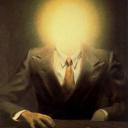Yahoo Answers is shutting down on May 4th, 2021 (Eastern Time) and beginning April 20th, 2021 (Eastern Time) the Yahoo Answers website will be in read-only mode. There will be no changes to other Yahoo properties or services, or your Yahoo account. You can find more information about the Yahoo Answers shutdown and how to download your data on this help page.
Trending News
I just got a guitar...?
How do I tell if it's a classical guitar or an acoustic?
I'm also trying to teach myself how to play, but I don't have any really easy to learn from books...What books are ones you'd suggest for me? I've learned the basic scale and the easy C chord, easy G chord, and the D chord, so I know just a little bit about it.....but I'm really serious about learning and playing really well....PLEASE suggest some good books! and I can't go to website links you post because of the parental controls on my web browser (I'm 16 and my parents still think I need coddling)......
6 Answers
- Jesus & KristleLv 51 decade agoFavorite Answer
On a Classical Guitar, the three treble strings are made from nylon, as opposed to the metal strings found on other acoustic guitars. Nylon strings also have a much lower tension than steel strings, as do the predecessors to nylon strings, gut strings (made from ox gut). The lower three strings ('bass strings') are wound with metal, commonly silver plated copper.
Also, the tuning pegs (or "keys") at the head the fingerboard of a classical guitar point backwards (towards the player when the guitar is in playing position; perpendicular to the plane of the fretboard). This is in contrast to a traditional steel-string guitar design, in which the tuning pegs point outward (up and down from playing position; parallel to the plane of the fretboard).
As far as instruction goes, I recommend the eMedia Guitar Instruction Method. It's a computer program. It's very helpful because it shows you exactly where you hands need to be and how to get them there.
- Anonymous5 years ago
I Think A Real Guitar Would Work Out Better For You So You Could Swoon Some Cute Guitar Playing Boys. ;D They'd Be Impressed. Also It's A Better Hobby.
- 1 decade ago
See if this helps:
http://www.guitarchordsmagic.com/guitar-chord-find...
When I was 21 yrs old in 1975 I learned from an old Mel Bay chord wheel that my Dad had kept from the 1930's. 8^)) But it worked.
I also took a music theory class in high school before I started the guitar but was singing in the choir. And another one my freshman year in college for the guitar
Don't get discouraged when your finger tips swell, get tender and hurt. This is normal in the beginning. You'll be building callouses in no time.
The hardest thing to get over at first is that you want badly to make music but can't play the songs you love. My advice is to find three chords and strum them in different rhythms. Please yourself at first. Back in the day it was G Major, C Major and D Major (or more properly D Major 7.) Or E-A-B7; or G-C-F is a simple progression. The "House of the Rising Sun" was always a beginners song.
- 1 decade ago
if the bottom three strings are nylon, it's a classical. if it has steel ones, it's an acoustic. if you're planning to learn just chords and stuff like that, just search on google for guitar chords. i go to ultimate-guitar.com they have chords and tabs and they give you the fingerings. if you want to learn classical, buy some books at music stores but it's better to get a teacher either way. i found that classical guitar bore me after a while, but that's just me.
- How do you think about the answers? You can sign in to vote the answer.
- PJHLv 51 decade ago
If it has nylon strings (all the same thickness) then it's a classical. If it has steel strings, it's an acoustic.
The book I use with my students is the "Hal Leonard Complete Edition". It comes with 3 CDs. You can get it through amazon.com for around $15.
- Anonymous1 decade ago
My suggestion is take those chords you know C, G, D and practice switching between them a lot until you can do it effortlessly without looking. And then try to close your eyes and fret the chords without looking at the fretboard. Once you can do that then learn harder chords... Save F for last... It's a toughie. After all that then you might be ready to play some songs...






